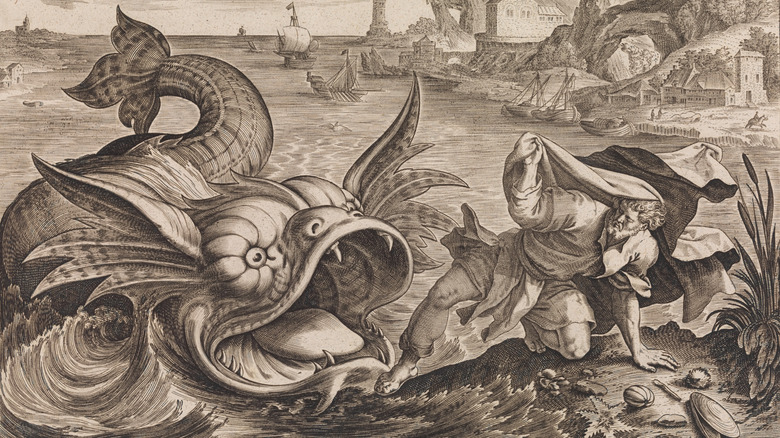
Snails Helped Make The Phoenicians Rich. Here’s How
Snails are small creatures — just a few centimeters long and at its max, maybe 12 inches. They cannot hear and they are among the slowest creatures on our planet, moving just 50 yards an hour. But they’re not weak — they can lift 10 times their body weight and, once upon a time, they helped make the Phoenician culture wealthy (via Snail World).
The Phoenicians and the snail might seem a strange match. Still, the Phoenicians, who lived around 1500-300 BCE, accomplished many things, including inventing glass, contributing to the alphabet’s development, creating beautiful metal and ivory crafts (via Grunge).
Who were the Phoenicians? Even historians cannot answer that question exactly, according to The Met. Ancient authors of the classics, the people lived in independent cities like Tyre, Sidon, Byblos, and Arwad, in the eastern Mediterranean and acted more like a federation than an actual country. They actively traded and were expert sailors and shipbuilders. They never actually used the term Phoenician either. It is thought that the Greeks dubbed them “phoenix,” perhaps as a reference to their well-known purple-red dyes.
Besides all these accomplishments, the Phoenicians harnessed the power of a special group of carnivorous sea snails.
A smelly snail that generates big bucks
Yes, carnivorous. Snails come in all kinds — you have plant-eaters, meat-eaters, the omnivorous variety that sups on both, and detritivores ones that feast on decay like animal waste and fungus (yuck!), according to the Natural History Museum. The Murex snail, which preferred tropical seas, liked their protein from bivalves, creatures with a hinged tail, and enjoyed mollusks, clams, oysters, and scallops. What was most important about them to the Phoenicians and other Mediterranean societies was a special gland that could create a distinct purple (via Nova Southeastern University).
The dye produced by the Phoenicians was much sought after because its rich color rarely faded. But obtaining it from the snail became a tiresome and difficult process. To gather it meant that the snails underwent a fermenting process that stunk. Not just a little either — making the dye required setting up a processing center outside of town, away from people (via “The History of Phoenicia” by Josette Elayi).
All that work needed compensation (plus the Murex’s gland was located right next to the rectum — not a fun extraction) and purchasing the dye was expensive. So much so that this Tyrian purple (see above), named after the city that meticulously produced it, became the favorite shade of the noble class, such as the kings, emperors, priests, and magistrates (via the BBC). Per Middle East Eye, the dye did require 120 pounds of snails to create a gram of powder — but the effort was worth it.

Did William Howard Taft Really Get Stuck In A Bathtub?

Here's Who Inherited Amy Winehouse's Money After She Died

This Famous Film Inspired David Bowie's Space Oddity

The Truth About Guantanamo Bay's 'Forever Prisoners'

The Truth About Jens Soering And Elizabeth Haysom's Relationship

The Monster That Terrorized New Zealand In The 1880s

The Real Reason Joni Mitchell Passed On Woodstock

This Is The Deadliest Tornado In US History

Bumblebee Decline Points To 'Mass Extinction', Study Says

Memes That Changed People's Lives For The Better























